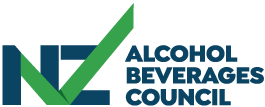Thursday 21 October 2021
Calls to ban all alcohol signage and advertising on council-controlled land across Tāmaki Makaurau ignores Auckland Council’s own advice that rejected the proposal.
“We already know that alcohol signage does not increase harmful drinking and a Council report agrees with us stating ‘evidence that advertising outside off-licenced outlets contributes to alcohol-related harm is weak to non-existent’ ”, says Bridget MacDonald, executive director of the NZ Alcohol Beverages Council (NZABC).
“However, this has not stopped anti-alcohol interests from running a campaign to support calls for a ban on signage and advertising,” says Bridget.
“The attempt to rally Aucklanders against small locally-owned liquor retail businesses and local community supermarkets, which are legitimate ratepaying businesses, is ludicrous,” says Bridget.
“Alcohol advertising and marketing are already highly regulated by the Sale and Supply of Alcohol Act and the Advertising Standards Authority’s Code for Advertising and Promotion of Alcohol. Globally, virtually all research has found that alcohol marketing has no or very modest effects on total alcohol consumption.
“In addition, the Foundation for Advertising Research has shown that while advertising spend has increased over the past decade, the total alcohol consumption has actually fallen in New Zealand, as backed by official health statistics,” says Bridget.
“We are therefore somewhat bemused to see academics and activists making statements that “big, bold, bright” colours used by off-licence businesses are offensive and “a blight on society”– particularly given brands and businesses across Aotearoa also use “big, bold, bright” colours. Their suggestion that off-licence premises should be painted in regulated neutral tones is nonsensical,” says Bridget.
“The fact is, the amount of alcohol being consumed in New Zealand is falling and has been for decades. Official data tells us that, on a per capita basis, we’re drinking about 25% less today than we did in the ’70s and ’80s. As the amount we drink decreases, the role of advertising is increasingly about getting the consumer to choose one brand over another. And that’s all.
“The pathway to reducing alcohol-related harm isn’t achieved by banning advertising or signage or the colour of a building; it’s by taking a purposeful, targeted pragmatic approach using education and well-evidenced social change programmes and support,” Bridget says.
ENDS
Need help?
Call the Alcohol Drug Helpline on 0800 787 797, free txt 8681, or visit alcoholdrughelp.org.nz.
Need more information? Here are some handy tips for better drinking decisions
- Check out cheers.org.nz and alcoholandme.org.nz for more information on what a standard drink is and how to make better drinking decisions.
- A good rule of thumb is ‘Go no, low or slow’. It’s okay to choose no- or low-alcohol drinks. If you choose to drink, pace yourself and enjoy your drink slowly.
- Drink plenty of water, especially in between drinks stay hydrated, and eat if you are drinking.
- Support others to stay safe and social. Check in with family and friends to help them stay connected.
- Ministry of Health/HPA Guidelines: Low-risk alcohol drinking advice to reduce your long-term health risks by drinking no more than:
– Two standard drinks a day for women and no more than 10 standard drinks a week,
– Three standard drinks a day for men and no more than 15 standard drinks a week,
– AND have at least two alcohol-free days every week.
